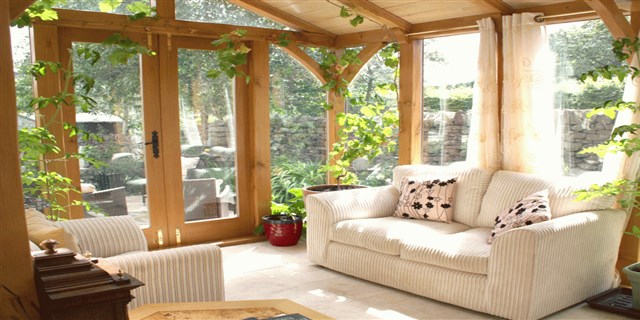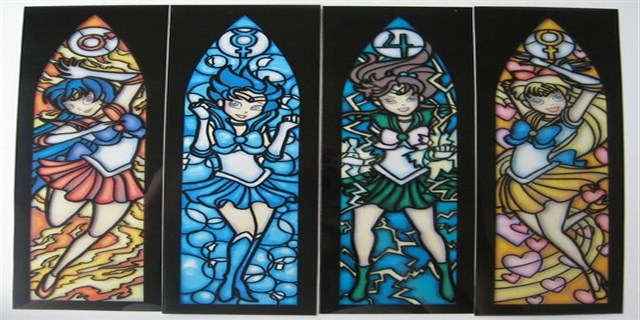Window treatments are not the only way of decorating windows, you can decorate the glass itself. The design of stained-glass windows ranges from gothic to modern. So, you will have a wealth of tradition on which to draw.
Basic Equipment and Materials
• Buying materials: You can buy all the tools and materials that you require for adding effects to glass from most good art suppliers.
They should also be able to give you advice.
• Choosing paints: You can use oil-based paints for applying simple painted designs to glass surfaces. However, these are translucent and will not be as effective as glass paints, which -are designed and manufactured.
Etching Windows
Etched windows are traditionally used in bathrooms, cloakrooms, and entrance halls in order to provide privacy as well as decoration. Etched glass can look effective in any window, but it is particularly useful if the window is very plain or overlooks an undesirable area.
Using Frosting Varnish
• Cleaning windows: Before varnishing, clean a window with household cleaner so that the glass surface is free of grime and other impurities.
• Applying varnish: Apply frosting varnish using the basic stenciling method. Mount a stencil in position on the window with a light covering of spray-on adhesive, and then apply the varnish to the outlined design.
• Changing designs: Most frosting varnishes are acrylic, so you can easily modify or completely change a design simply by cleaning away the varnish using an abrasive cleaner and a window scraper.
Etching Quickly
Using spray-on “snow” with a stencil in place on a window, use spray-on festive snow for an etched effect. Two or three light coats are better than one thick one. Remove excess snow with fine sandpaper.
Green Tip
Reusing etching fluid:
Commercial etching fluids can be used on any glass surface. Most can be re-used since once the fluid has dried the residue can be scraped away and returned to the container to be used again.
Reproducing Stained Glass Effect
Modern decorating materials make it use colored glass or lead. You can use relatively easy to reproduce the effect of commercial paints on the plain glass to achieve a stained glass on your windows without needing a very authentic-looking stained-glass effect.
Cheating Designs
• Seeking inspiration: Having chosen a window to decorate, you must then select a design. Stained glass is traditionally associated with ornate settings and religious themes, while single motifs or original patterns on plain glass windows are a more modern option.
• Tracing designs: Mount design to the outside of a window using a low-tack adhesive. Draw the design on cardboard that is rigid enough to remain in place against the surface of the glass, making tracing much easier.
• Finishing: Once it is dry, clean your stained glass using a soft cloth and mild household window cleaner.
Imitating Stained Glass
Attach a design to the outside of a window. Apply the appropriate color to each area on the inside. Do not overload the brush, since the paint will run easily. Work from the top down to avoid smudging.
On a Window
Once the colors are dry, add the leaded effect using a tube of a silver outliner. Keep a steady movement to avoid unevenness. Remove the design from the outside of the window when you have finished.
Reproducing Leaded-light Effects
Leaded lights share a similar tradition that light effect is ideal for large, plain windows of stained glass, although the technique for that lack of interesting features or for recreating reproducing them is quite different.
Creating Leaded Lights on Your Windows
• Draw the leaded-light design on clear sticky-backed plastic, and attach it to the inside of the window. Cut around the “panes” of glass, leaving them stuck to the glass but peeling away the rest.
• With a commercial metallic aerosol paint, apply three or four thin coats to the entire area. Metallic paint is ideal since it adds texture and depth to the leaded areas as well as providing a realistic color.
• When the paint is dry, remove the “panes” of sticky-backed plastic between the “leaded” strips to reveal the glass. Remove any excess drips or runs of paint using a standard window scraper.






